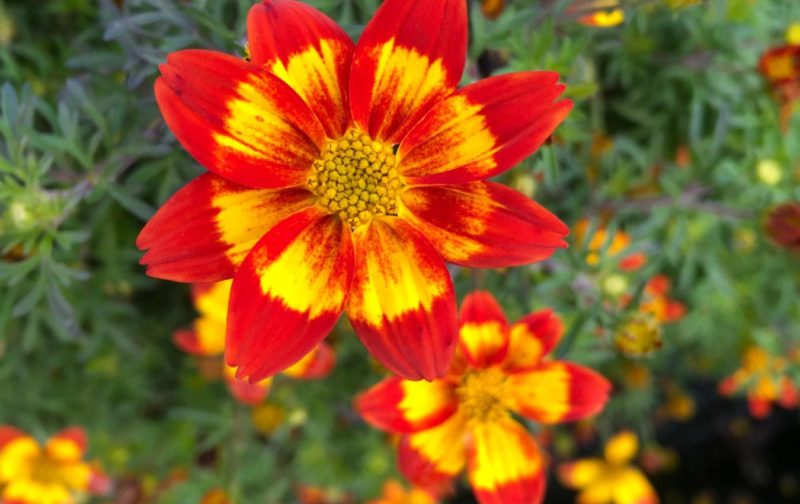
The Trials of Flower Trials in a Pandemic
Since 1933, Penn State University has been testing flowers and plants. Our trial is one of the oldest and largest universitybased flower trials research programs in the U.S. I have been involved with the trials for about eight years, long before I worked for Extension.
Our work at “the trials” supports horticulture business decisions far outside our state’s borders. Based on surveys conducted in past years, the PSU trials is the No. 1 tool that many growers in the Northeast use to make buying decisions for their upcoming season’s production. In normal years, we hold an event in July where about 300 people come to our Lancaster area research center (SEAREC) to view on average 1,000 rated entries from 35+ breeding companies. We host visitors throughout the season and have satellite sites at Hershey Gardens and outside Pittsburgh at North Park. At SEAREC, we trial both potted annuals and in ground perennials.
We usually have an army of volunteers, composed mostly of trained Master Gardeners and Extension educators that keep our program going. During “potting up” in May about 100 volunteers plant the entire trials in three days, then 25 volunteers provide maintenance June through September.
Weather in this part of the country is always a challenge. It is mostly hot and humid; some years we have drought, and some years 60 inches of rain. The motto is, “If it performs well at Penn State Flower Trials, you should add it to your growing program.” Like most things in 2020, the flower trials took on a new beginning our planting week to how we disseminated information and final outcomes.
HOW WE PIVOTED
At the time we shut down in March, plugs and liners began arriving in the greenhouse. Thankfully, with PSU, our program was designated as “mission critical.” To move forward we were left with two challenges: 1) how to transplant the plugs and prune and repot the trials with limited staffing and 2) how we would bring the trials information and results to the masses, since SEAREC is closed to visitors.
We knew we would have to scale back. We were left with a skeleton crew — about 15 people comprised of SEAREC staff, Extension educators and interns — to bring all of this to fruition. Thankfully, the trials are supported by the Floriculture Advisory Board, composed of industry professionals and other Extension educators.
Working together we devised a plan to adjust. First, instead of three replications of each trial entry, only two replications were planted for 2020. This took us nearly 10 days.
Once we got the trials out in the field the real work began; how would growers, retailers and industry professionals be able to view the trials? Luckily, we have a great website with real-time ratings where we had started a small video series in 2019. It was decided that we could offer our 2020 season in a virtual trials webinar format and expand on the video series with several new topics.
We didn’t know exactly how it would look or be received, but we forged on as best we could. My colleagues, Nick Flax and Trials Director Sinclair Adam, got to work on a schedule. We invited Allan Armitage to give a keynote/introduction; a few breeding firms sent videos highlighting their latest and greatest plants; and finally Sinclair, Nick and I took viewers on a walkabout through the annual portion of the trials. Perennials got their own 25 minutes of fame in our video this year.
We filmed hours of raw footage, highlighting at least one of every firm’s entries in each cultivar, had plenty of bloopers, and eventually got really good at one-takes. In the end, a three-hour webinar was delivered to almost 500 people from various states and is available to watch on demand. The video series comprises five videos, available on demand. This series highlights, “Sun vs. Shade,” “What’s Looking Great Now,” “Strong Finishers” and the perennial overview.
LOOKING FORWARD
Our hope is to be able to welcome everyone back to SEAREC in 2021. If not, we are working on upping our social media plan, ideas on how to tackle virtual trials and also ways to highlight each of our breeding companies. Even if the in-person event returns in 2021, having a more robust virtual presence is in our future.
MY TOP PICKS
Of course, one of my favorite parts of being involved is getting to see all the plants that I want to incorporate in my own gardens and planters. These three plants are my top picks this year:
• MixMasters Pico de Gallo from Ball FloraPlant
• Bidens ‘Taka Tuka M’ from Benary Plus
• New Guinea impatiens ‘Roller Coaster Tangy Taffy’ from Dümmen Orange


 Video Library
Video Library 




















